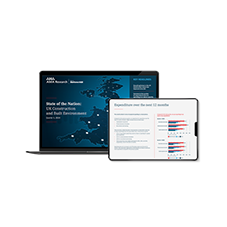The outlook for the UK construction industry in recent years has become somewhat gloomy, as the price of necessary building materials continues to rise. These fluctuating prices are the outcome of consistent challenges for the industry, including inflation, labour shortages and the continued fallout from the COVID pandemic.
When it comes to maintaining a safe and efficient working environment, quality building materials are a priority, but what can be done to combat this continuing issue? The positive news is that there are various strategies that can be employed to deal with this financial strain, and those looking to minimise the commercial impact of increased construction costs have options to consider! This piece will explore the reasons behind these rising costs, as well as provide some top tips to tackle them head on.
Why have material costs risen so high in recent years?
There are several explanations for the rapid growth in building material costs, but increasing inflation rates remain at the heart of the issue, influencing everything from material costs to transportation expenses. In the construction sector, inflation has the potential to affect cost, access to supplies, labour, and equipment, all of which contribute to the overall budget of large-scale construction projects. Additionally, fluctuating costs of essential raw materials such as steel and concrete have led to an alarming surge in projects surpassing their estimated budgets, significantly delaying start dates, and reducing profitability.
An additional factor to consider is the effect the pandemic had on the cost of building materials, which caused several disruptions, such as shortened supply chains and production. Unfortunately, after the pandemic subsided, these setbacks persisted into 2023, and costs continued to soar.
What do rising costs mean for consumers and construction?
A key issue that rising costs pose for the construction industry is unforeseen risk exposures and safety regulations. Even with the ongoing success in the industry, safety queries and the possibility that companies could economise to combat price fluctuations remains a pressing concern, as building materials continue to rise. The concern lies with businesses cutting corners to keep costs low, including skipping fire safety regulations to purchase cheaper building alternatives. These cheaper alternatives produce multiple health and safety issues, such as projects becoming a fire hazard or risking dangerous collapse.
In addition to this, with the cost of building materials for new housing developments rising 21 percent in the last few years, consumers are feeling the pressure of increasingly slow house building times. These setbacks leave families unable to move into their necessary accommodation or stripped of the opportunity to expand their premises.
Construction prices in 2024
The construction industry has battled fluctuating construction material prices since the COVID 19 pandemic hit the supply chain back in 2020, and in accordance with recent reports, price escalation is unlikely to change heading into 2024. To put things into perspective, predictions indicate that prices may rise by as much as 28 percent in comparison to pre COVID levels.
However, the forecast isn’t all negative, with the construction market facing different directions when analysing popular building materials. Cement and concrete are expected to rise as a reflection of high production and transportation costs, whilst iron and steel are expected to reduce slightly. Overall, this inconsistency proves that it is often difficult to predict what lies ahead for this industry.
Top tips for tackling construction costs.
Continued communication – To avoid as many setbacks as possible, keep lines of communication open with managers and contractors, regardless of whether you are experiencing stress as a customer or from working across the field.
Be prepared with early planning and payment – Financially speaking, it is beneficial to allow ample time for big decisions; the earlier clients and contractors can approve and work together effectively, the better.
Do the appropriate research before quoting – Do your homework before providing or accepting an estimate for a project, bearing in mind that material costs are always changing, to make sure that all standards are being fulfilled and health and safety regulations are being followed.
Related Blog Articles



crop192.png)












